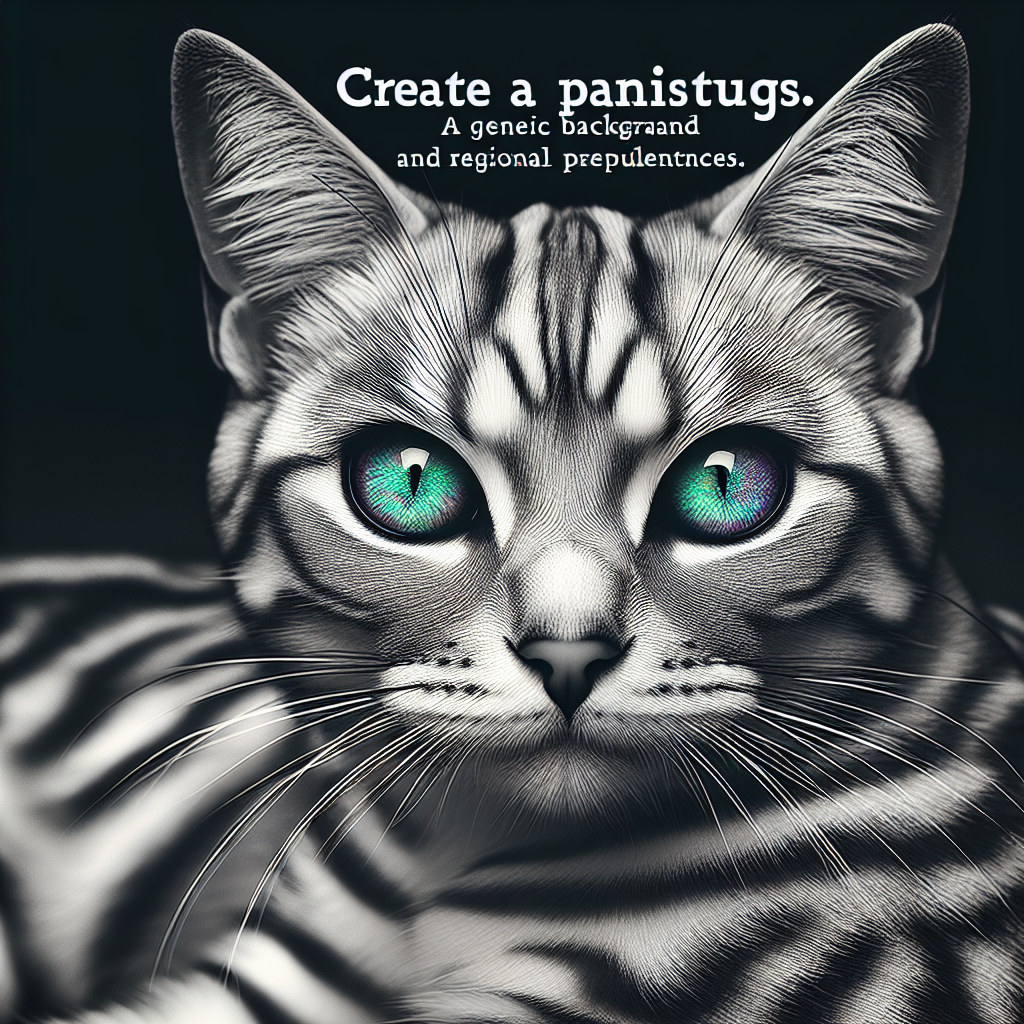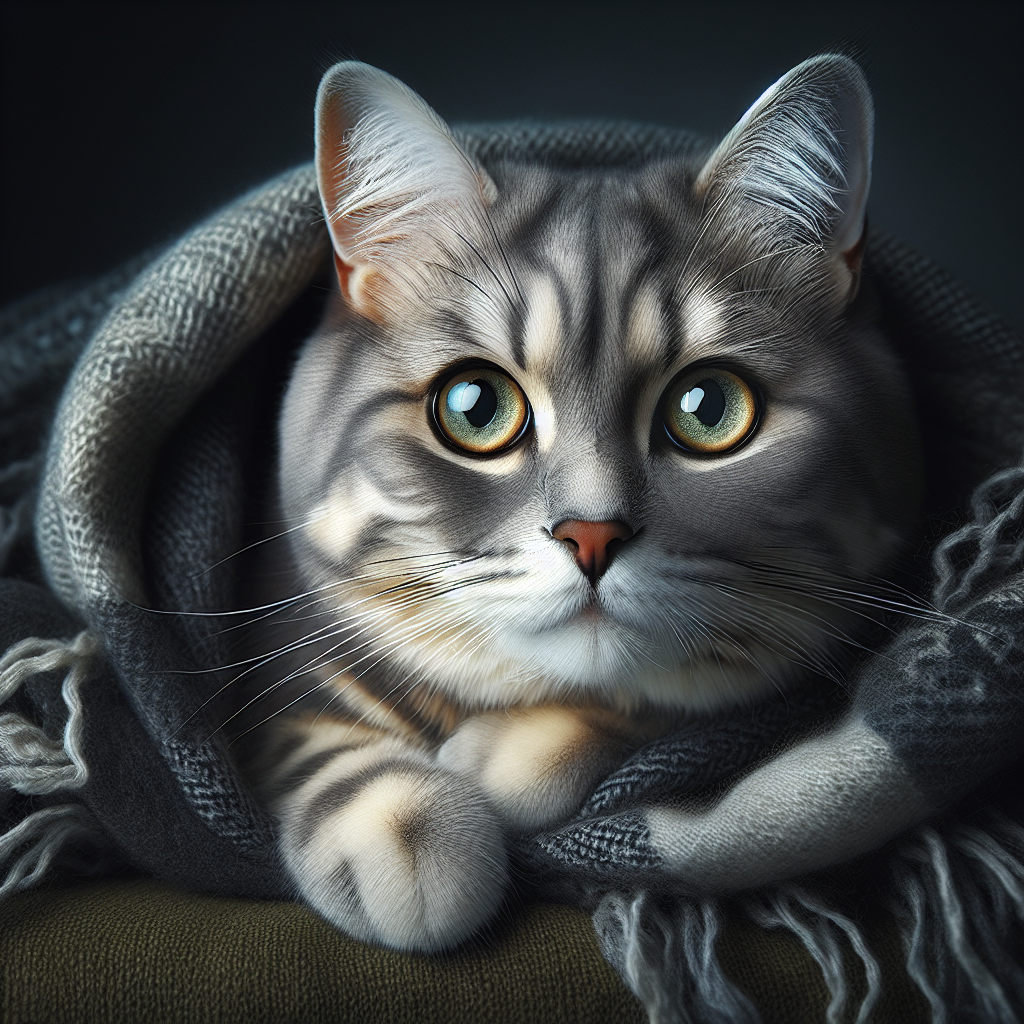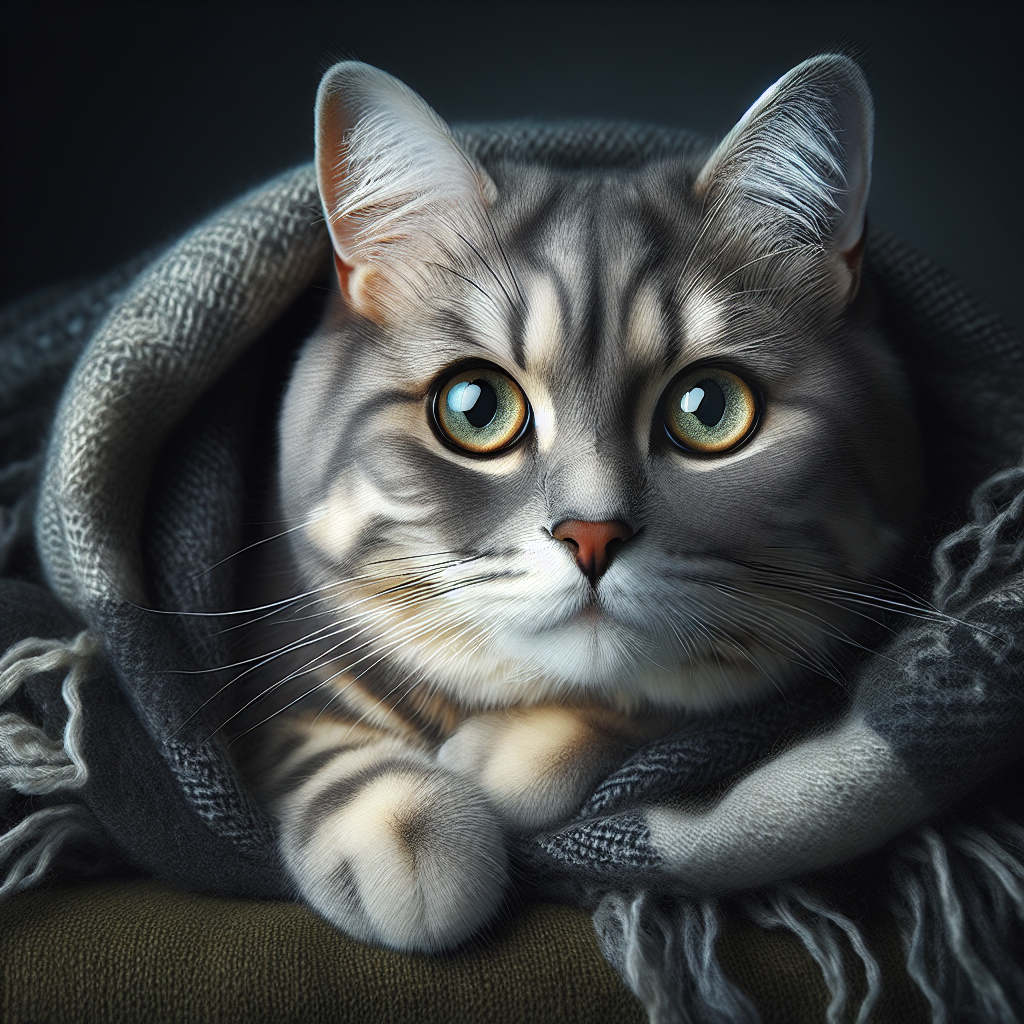Gray tabby cats are often admired for their unique markings and striking appearance. But have you ever wondered, are gray tabby cats rare? These captivating felines boast a beautiful combination of gray fur mixed with intricate tabby markings, making them a sought-after sight for cat lovers. In this article, we will explore the prevalence of gray tabby cats, uncovering whether they are indeed a rare find or a common sight in the feline world. So get ready to unravel the secrets behind these mesmerizing creatures and discover just how rare gray tabby cats truly are.

What are gray tabby cats?
Gray tabby cats are a specific color and pattern variation seen in domestic cats. They are characterized by their base coat color of gray, often with darker stripes or swirls, known as tabby markings. These markings can vary in intensity and pattern, with some cats having bold, defined stripes and others having a more muted, mottled appearance. Gray tabby cats can belong to various breeds and can have different physical characteristics, but their characteristic gray coat with tabby markings is what sets them apart.
Definition of a gray tabby cat
A gray tabby cat, also known as a blue tabby cat, is a cat with a base coat color of gray and tabby markings. The color gray can range from light silver to deep slate gray, and the tabby markings can take the form of bold stripes, swirls, or spots. These cats can have different coat lengths, body types, and facial features, depending on their breed or individual genetic makeup. Gray tabby cats are not limited to a specific breed and can be found in various populations of domestic cats.
Physical characteristics of a gray tabby cat
Gray tabby cats can exhibit a wide range of physical characteristics depending on their breed and individual genetics. In terms of coat length, they can have short, medium, or long fur. The pattern and intensity of their tabby markings can vary from cat to cat, with some having bold, pronounced stripes, and others displaying a more subtle, mottled appearance. Gray tabbies can have various body types, ranging from lean and athletic to more robust and muscular. Their eyes can be of different colors, including shades of green, gold, or amber.
Distribution and prevalence of gray tabby cats
Gray tabby cats around the world
Gray tabby cats can be found in populations of domestic cats worldwide. They are not limited to any specific geographic region or cultural background. Regardless of location or breed, gray tabbies can be seen in many households and communities.
Frequency of gray tabbies in different regions
The prevalence of gray tabby cats may vary in different regions. In some areas, they might be more common compared to others. This can be influenced by factors such as the popularity and availability of certain breeds that commonly exhibit gray tabby coats, as well as the local population of cats and the genetic diversity within that population.
Commonness of gray tabby cats in shelters
Gray tabby cats are often found in shelters and rescue organizations. Due to their relatively common occurrence in domestic cat populations, it is not uncommon to see gray tabby cats available for adoption or in need of homes. Shelters typically have a mix of cats with various coat colors and patterns, including gray tabbies.
Possible reasons for varying prevalence
The varying prevalence of gray tabby cats in different regions can be influenced by several factors. One factor is the popularity of certain cat breeds that commonly exhibit the gray tabby coat color. Another factor is the genetic makeup of the local cat population, which can influence the likelihood of producing gray tabby offspring. Environmental factors and the selective breeding practices within a region can also contribute to the variation in prevalence. It is important to remember that the term “rare” itself can be subjective, as what may be considered rare in one location might be more common in another.
Genetics of gray tabby cats
Tabby cat coat patterns
Tabby cat coat patterns refer to the distinctive markings seen on the fur of tabby cats. These patterns can include bold stripes, swirling patterns, spots, or a combination of these elements. The tabby pattern is a result of specific gene interactions and plays a role in determining the appearance of gray tabby cats.
Inheritance of gray tabby coat
The inheritance of the gray tabby coat color is complex and involves multiple genes. It is influenced by both dominant and recessive genetic factors. Both parents contribute to the coat color of their offspring, and the expression of the gray tabby coat can vary depending on the specific genetic combination inherited from each parent.
Genes responsible for gray tabby pattern
The agouti gene (A/a) is primarily responsible for the presence of the tabby pattern in cats. The dominant version of the agouti gene (A) allows the tabby pattern to be expressed, while the recessive version (a) suppresses the tabby pattern, resulting in a solid coat color. Variations in other genes, such as the melanocortin 1 receptor (MC1R) gene, can further modify the appearance of the gray tabby pattern, influencing factors such as the shade of gray and the intensity of the tabby markings.
Interactions between tabby genes and other coat color genes
The presence of other coat color genes can interact with the tabby genes and influence the appearance of gray tabby cats. For example, the dilution gene (D/d) can affect the intensity of the gray color, leading to lighter shades of gray. Other genes, such as those responsible for white spotting or colorpoint patterns, can also interact with the tabby genes and create unique variations within the gray tabby coat pattern.
Other factors influencing gray tabby cat rarity
Link between gray tabby color and breed
While gray tabby cats can be found in various breeds and populations, there may be certain breeds that are more commonly associated with this color and pattern combination. Breeds such as the American Shorthair, British Shorthair, Maine Coon, and Norwegian Forest Cat are known to frequently exhibit gray tabby coats. The availability and popularity of these breeds can, in turn, influence the prevalence and perception of gray tabby cats.
Effect of gender on gray tabby prevalence
There is no definitive evidence to suggest that gray tabby cats are more prevalent in either male or female cats. However, certain studies have suggested that male cats may be slightly more likely to exhibit a gray tabby coat compared to females. It is important to note that individual genetic variations and breed-specific traits play a significant role in the prevalence of the gray tabby pattern within any given population of cats.
Medical conditions associated with gray tabby cats
There are no specific medical conditions that are exclusively associated with gray tabby cats. However, as with any cat, gray tabbies can be prone to various health issues. These can include common conditions such as dental disease, obesity, or urinary tract problems. It is important for owners of gray tabby cats, as well as all cat owners, to provide regular veterinary care and monitor their cat’s overall health.
Environmental factors affecting gray tabby population
Environmental factors, such as habitat loss or human-induced changes in ecosystems, can have an impact on any cat population, including gray tabby cats. Loss of suitable habitats can result in a decline in the overall cat population, leading to a potential reduction in the prevalence of specific coat colors and patterns, including gray tabbies. Protecting natural habitats and promoting responsible ownership can help maintain healthy populations of gray tabby cats.
Impact of selective breeding on gray tabbies
Selective breeding practices can influence the prevalence and availability of gray tabby cats within specific breeds. Breeders may choose to selectively breed for certain coat colors and patterns, including gray tabby, to meet the demand for specific appearance traits. This can result in an increased prevalence of gray tabby cats within specific breeds, while potentially decreasing their occurrence in other populations of domestic cats.

Common misconceptions about gray tabby cats
Gray tabby cats mistaken for other coat colors/patterns
Gray tabby cats are sometimes mistaken for other coat colors or patterns due to variations in the appearance of their coat. Depending on the lighting, pattern intensity, and specific genetic makeup, a gray tabby may resemble a solid gray cat from a distance or in certain lighting conditions. It is important to closely observe the markings and coat color of a cat to correctly identify it as a gray tabby.
Beliefs about superstitions and luck associated with gray tabbies
Throughout history, there have been various superstitions and beliefs associated with cats, including those with gray tabby coats. Some cultures attribute specific meanings or luck to gray tabby cats, while others regard them as ordinary cats without any particular significance. It is essential to approach such beliefs with an open mind and recognize that they are often based on cultural traditions rather than scientific evidence.
Assumptions on rarity based on appearance
The assumption of rarity based solely on appearance can be misleading. While certain coat colors and patterns may be less common or more sought after within specific breeds or populations, it does not necessarily translate to general rarity within the overall cat population. Gray tabby cats, despite their distinctive appearance, can be found in a variety of domestic cat populations and are not considered rare in the broader sense.
Cultural significance of gray tabby cats
Historical depictions of gray tabbies in art and literature
Gray tabby cats have been depicted in art and literature throughout history. They have appeared in various forms of artistic expression, including paintings, sculptures, and literary works. Artists and authors often use gray tabbies to convey specific symbolism or evoke certain emotions. Their image has become a part of cultural representations of cats and continues to hold significance in art and literature.
Symbolism and meanings attributed to gray tabby cats in different cultures
Different cultures attach various symbols and meanings to gray tabby cats. In some cultures, they are considered symbols of good luck, prosperity, or protection against evil spirits. In other cultures, they may hold no specific symbolism or are simply regarded as beloved pets. The significance ascribed to gray tabby cats varies widely and is influenced by cultural beliefs and individual interpretations.
Popularity of gray tabbies in feline-themed media
Gray tabby cats often feature prominently in feline-themed media, such as movies, cartoons, and advertisements. Their distinct appearance and the perceived charm associated with their gray coat and tabby markings make them popular choices for embodying feline characters in various forms of entertainment. This popularity in media further contributes to the recognition and appreciation of gray tabby cats.
Efforts to conserve and protect gray tabby cat populations
Awareness campaigns for adoption of gray tabbies
Various animal welfare organizations and shelters undertake awareness campaigns to promote the adoption of gray tabby cats. These campaigns aim to raise awareness about the unique qualities and characteristics of gray tabbies, emphasizing their suitability as pets. By highlighting the availability and desirability of gray tabby cats, these efforts help increase their adoption rates and find loving homes for these cats.
Conservation programs for endangered gray tabby breeds
Some specific breeds of gray tabby cats may face the risk of endangerment due to low population numbers or genetic vulnerabilities. To preserve these breeds, conservation programs are established to promote responsible breeding practices, genetic diversity, and the adoption of individuals from endangered gray tabby breeds. These programs play a vital role in preserving the unique characteristics and genetic heritage of these cats.
Promotion of responsible breeding practices
Responsible breeding practices can help ensure the health and welfare of gray tabby cats, as well as all cats. By prioritizing the well-being of the cats and prioritizing the preservation of breed traits, responsible breeders contribute to the long-term viability and sustainability of gray tabby populations. This includes screening for genetic diseases, maintaining proper living conditions, and adhering to ethical breeding standards.
Initiatives to address overpopulation and stray gray tabbies
To prevent issues related to overpopulation and the presence of stray gray tabby cats, initiatives such as spaying and neutering programs are crucial. These efforts help control the cat population and reduce the number of homeless cats, including gray tabbies. By addressing the root causes of overpopulation, such initiatives play a role in ensuring the well-being and welfare of gray tabby cats.
The future of gray tabby cats
Predictions on gray tabby prevalence
Predicting the future prevalence of gray tabby cats is challenging due to the various factors that can influence their occurrence. Changes in breeding practices, evolving public preferences, and environmental factors can all contribute to potential shifts in gray tabby populations. Additionally, ongoing genetic research may provide insights into the inheritance and expression of gray tabby traits, potentially influencing the prevalence of this coat color and pattern combination.
Role of genetic research in understanding gray tabby genetics
Genetic research plays a vital role in deepening our understanding of gray tabby genetics. Through studies on inheritance patterns, gene interactions, and the identification of specific genes responsible for the gray tabby pattern, researchers can unravel the underlying mechanisms behind this distinctive coat color and pattern. Such research can also enhance our knowledge of the broader field of feline genetics and contribute to the conservation and well-being of gray tabby cats.
Implications of changing environmental factors on gray tabbies
As the natural environment continues to undergo changes due to human activities, the implications for gray tabby cats and their populations are uncertain. Environmental factors, such as habitat destruction or climate change, can potentially impact the availability of suitable habitats and resources for wild and domestic cat populations. Conservation efforts, responsible ownership practices, and raising awareness about the importance of biodiversity may help mitigate negative impacts and secure the future of gray tabby cats.
How to care for a gray tabby cat
Grooming needs specific to gray tabbies
Gray tabby cats, regardless of coat length, generally have grooming needs similar to other domestic cats. Regular grooming, such as brushing their fur and ensuring proper dental care, is essential to maintain their overall health and appearance. Depending on the specific coat length and texture, gray tabbies may require more frequent or specialized grooming to prevent matting or excessive shedding.
Dietary considerations for gray tabby cats
Gray tabby cats have the same dietary requirements as other domestic cats. A balanced diet that meets their nutritional needs is crucial for their overall health and well-being. High-quality cat food, appropriate for their life stage and any specific health concerns, should be provided. It is important to consult with a veterinarian to determine the most suitable diet for a gray tabby cat and to monitor their weight and feeding habits regularly.
Health concerns common in gray tabby cats
As with all cats, gray tabby cats can be susceptible to certain health concerns. Some of the commonly observed health issues in gray tabbies include dental disease, obesity, and urinary tract problems. Regular veterinary check-ups, preventive care, and prompt attention to any signs of illness or discomfort are essential in maintaining the health of gray tabby cats.
Exercise and play recommendations for gray tabbies
Gray tabby cats, like all cats, require regular exercise and mental stimulation to keep them happy and healthy. Indoor playtime with interactive toys, scratching posts, and climbing structures can help fulfill their natural instincts and prevent boredom. Engaging in interactive play sessions and providing environmental enrichment can promote physical activity and mental stimulation, while also strengthening the bond between the cat and its owner.
Conclusion
Gray tabby cats are a distinctive and widespread variation of domestic cats, characterized by their gray base coat color and tabby pattern markings. They can be found in various breeds and populations around the world. The prevalence of gray tabby cats can vary in different regions, influenced by factors such as breed popularity, genetics, and environmental conditions. Gray tabby cats have unique genetics, with multiple genes contributing to their coat color and pattern. While there are certain beliefs and superstitions associated with gray tabbies, their overall rarity should not be assumed based solely on their appearance. Gray tabby cats hold cultural significance and have been depicted in art, literature, and popular media. Conservation efforts, responsible breeding, and adoption initiatives contribute to the protection and well-being of gray tabby populations. As the future unfolds, genetic research and changing environmental factors may influence the prevalence and understanding of gray tabby cats. Proper care for gray tabbies includes routine grooming, appropriate nutrition, regular veterinary care, and opportunities for exercise and play. Ultimately, gray tabby cats bring joy and companionship to many households, regardless of their perceived rarity or cultural symbolism.

